 Vampire Weekend's Surprising Jewish Stories
Vampire Weekend's Surprising Jewish Stories
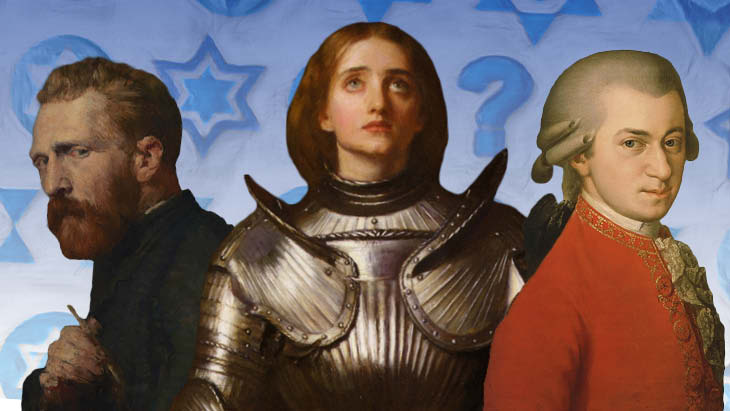

< 1 min read
Test your history knowledge with this fun, interactive quiz.
Only time can tell what’s truly good and what’s not. Which of the following six historical figures ended up being good for the Jews and which ones ended up disasters?
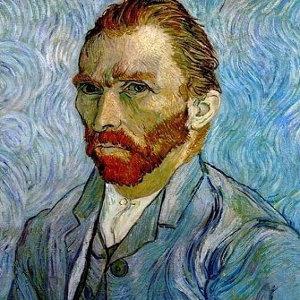 The Dutch impressionist painter posthumously became one of the most influential artists of all time. In what way did his life and work affect the Jewish people?
The Dutch impressionist painter posthumously became one of the most influential artists of all time. In what way did his life and work affect the Jewish people?
Answer: Good!
Van Gogh may have had limited interaction with the Jews of his time (even though there do exist sketches and paintings of Jewish people and sites such as The Bookseller Blok and records of his visit to a Jewish cemetery in 1714). However, it was through a Jewish art dealer named Paul Cassirer that Van Gogh’s work started to gain popularity in Berlin in 1901. In fact, many of Van Gogh’s paintings were purchased by Jewish art collectors, ushering in the popularization of modern art in Europe and America. The relationship was mutually beneficial, propelling Van Gogh’s art while making Jewish collections priceless.
 María Eva Duarte de Perón aka, Eva Perón, aka Evita was known throughout Argentina as an activist, actress, philanthropist, and First Lady. And if you’re a fan of Broadway or Madonna, you can add the star of a major musical biopic to the list. But was the Argentinian icon and her husband harmonious for Jews? Or did they end on a bad note?
María Eva Duarte de Perón aka, Eva Perón, aka Evita was known throughout Argentina as an activist, actress, philanthropist, and First Lady. And if you’re a fan of Broadway or Madonna, you can add the star of a major musical biopic to the list. But was the Argentinian icon and her husband harmonious for Jews? Or did they end on a bad note?
Answer: Bad
"Don't cry for me Jewish people. The truth is my regime back-stabbed you!"
According to declassified documents by Gen. B.R. Legge, a senior U.S. military liaison officer stationed in Berne, Switzerland, in 1945, the Peróns facilitated the escape of Senior Nazis through Argentina to South America. And made quite the profit doing so. As many as 15,000 Nazis were able to attain haven in Argentina in exchange for looted art, gold, and cash.
However, the former president of the US-Argentine Chamber of Commerce has gone on the record saying that the Peróns were not antisemitic. He noted that the Peróns did reach out to the Jewish communities of Argentina when developing policy.
Clearly the Peróns were complicated. But when they aided and abetted such criminals as Adolf Eichmann, an architect of the Holocaust, and Josef Mengele, aka "Angel of Death," for profit, it’s hard to see their scales balanced for the good.
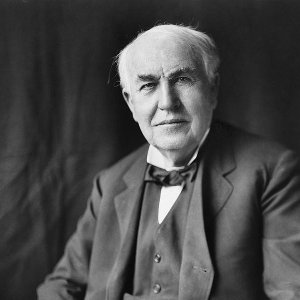 Thomas Edison is credited for inventing the incandescent lightbulb, the phonograph, the carbon microphone, the vacuum diode, the movie camera, and the alkaline storage battery. And that’s just to name a few. How did such an influential man regard some of history’s other rather influential people (i.e. the Jews)?
Thomas Edison is credited for inventing the incandescent lightbulb, the phonograph, the carbon microphone, the vacuum diode, the movie camera, and the alkaline storage battery. And that’s just to name a few. How did such an influential man regard some of history’s other rather influential people (i.e. the Jews)?
Answer: Terrible!
First off Edison was a raging antisemite, having been cited in a letter in 1888 referring to the Jews as “terrible examples” of businessmen and saying, “I wish the Jews would all quit making money.” Shortly after Germany invaded France and Belgium in 1914, Edison blamed the Jews suggesting that they were responsible for the profitable German economy which fueled their militaristic intent. He produced short films such as “Cohen’s Advertising Scheme,” “Our Hebrew Friends,” and “Cohen’s Fire Sale” which all used antisemitic stereotypes and had the Jewish characters engaging in bribery, fraud, and deplorable business schemes.
Even his financial legacy is known to have been used for antisemitism as his grandniece, Jean Edison-Farrel, willed her money to the Institute for Historical Review, a nonprofit organization dedicated to Holocaust denial.
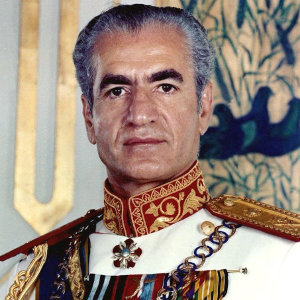 Iran’s last ruler of the Pahlavi dynasty. He was overthrown and fled into exile during the Iranian Revolution of 1979. Though Iran doesn’t have the best track record with the Jews, how was the Shah to the Jewish people?
Iran’s last ruler of the Pahlavi dynasty. He was overthrown and fled into exile during the Iranian Revolution of 1979. Though Iran doesn’t have the best track record with the Jews, how was the Shah to the Jewish people?
Answer: Good
Before the rise of the Ayatollah, Mohammad Reza Shah had made major strides in modernizing Iran. Though still an autocrat with a terrifying secret police, Reza Shah was one of the few Muslim leaders who had unofficial relations with Israel as early as 1950. Then after the 1967 war, when Israel established its military superiority, Reza Shah made his partnership official. He welcomed Israeli trade and schmoozed with Israeli businessmen. In fact, during the years of his rule, the Iranian Jewish community thrived, numbering in the 100,000s dwarfing 2021’s paltry population of less than 9,000.
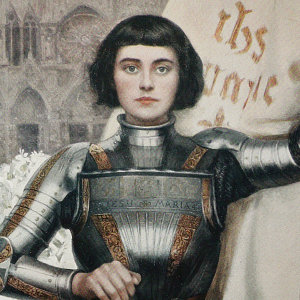 The pious 17-year-old heroine, Joan of Arc led the French into battle. Though burned at the stake for heresy, she was later declared a patron saint by the Catholic Church and in modern times became viewed as a feminist icon. But how has her legacy been for the Jews?
The pious 17-year-old heroine, Joan of Arc led the French into battle. Though burned at the stake for heresy, she was later declared a patron saint by the Catholic Church and in modern times became viewed as a feminist icon. But how has her legacy been for the Jews?
Answer: Bad
Not much is known about Joan of Arc’s opinions of the Jews of her time. But it is unlikely they were much of a concern to her as the Jews were expelled from France from 1394 until the beginning of the 17th century. However, that doesn’t mean her legacy didn’t have an impact on the Jews of France in later years.
As a symbol, unfortunately Joan of Arc’s martyrdom and sainthood became a rallying cry for antisemitism, not unlike how Jesus’ crucifixion became a justification for violence against Jews. In the 19th century, historian Jules Michelet likened Joan’s jury trial to the Sanhedrin (Jewish court) that condemned Jesus. During the 1890s, antisemites of Paris assembled at the statue of Joan of Arc to condemn Alfred Dreyfus. Not more than a half century later, the Nazi puppet Vichy government of France used Joan of Arc’s image for posters to portray her as an enemy of the Jews.
Though certainly not a fault of her actions, Joan of Arc would become a figure of French nationalism to restore a “true France." Meaning one without the likes of Jews and immigrants. Unfortunately, it wouldn’t be the last time her image was used for hate and political propaganda as France’s far right National Front has used her for those very purposes in recent years.
 With over 800 works, Mozart may have been the most influential composer of the Classical period. But was this prolific prodigy preferable to the Jews? Or pernicious?
With over 800 works, Mozart may have been the most influential composer of the Classical period. But was this prolific prodigy preferable to the Jews? Or pernicious?
Answer: Good
Mozart had multiple Jewish friends such as Fanny von Arnstein, a salon hostess and pianist, and Baron Raimund Wetzlar von Plankenstern, a landlord turned friend (who converted to Christianity). But his third Jewish friend, librettist Lorenzo Da Ponte (also a converso) would collaborate on Mozart’s most well-known operas including: The Marriage of Figaro, Cosi Fan Tutte, and Don Giovanni.
Interestingly, Don Giovanni was inspired by the play The Trickster of Seville and the Stone Guest by another former Jew, Tirso de Molina. Don Giovanni is actually a metaphorical criticism of Catholicism which features Jewish themes most notable of which is that of a statue that comes to life (a reference to the Yiddish story of the Golem.) Because of Mozart and Da Ponte’s collaboration, the undeniable Jewish talent will be felt for generations as it is woven into some of the most profound musical works the world has ever known.

Very interesting!